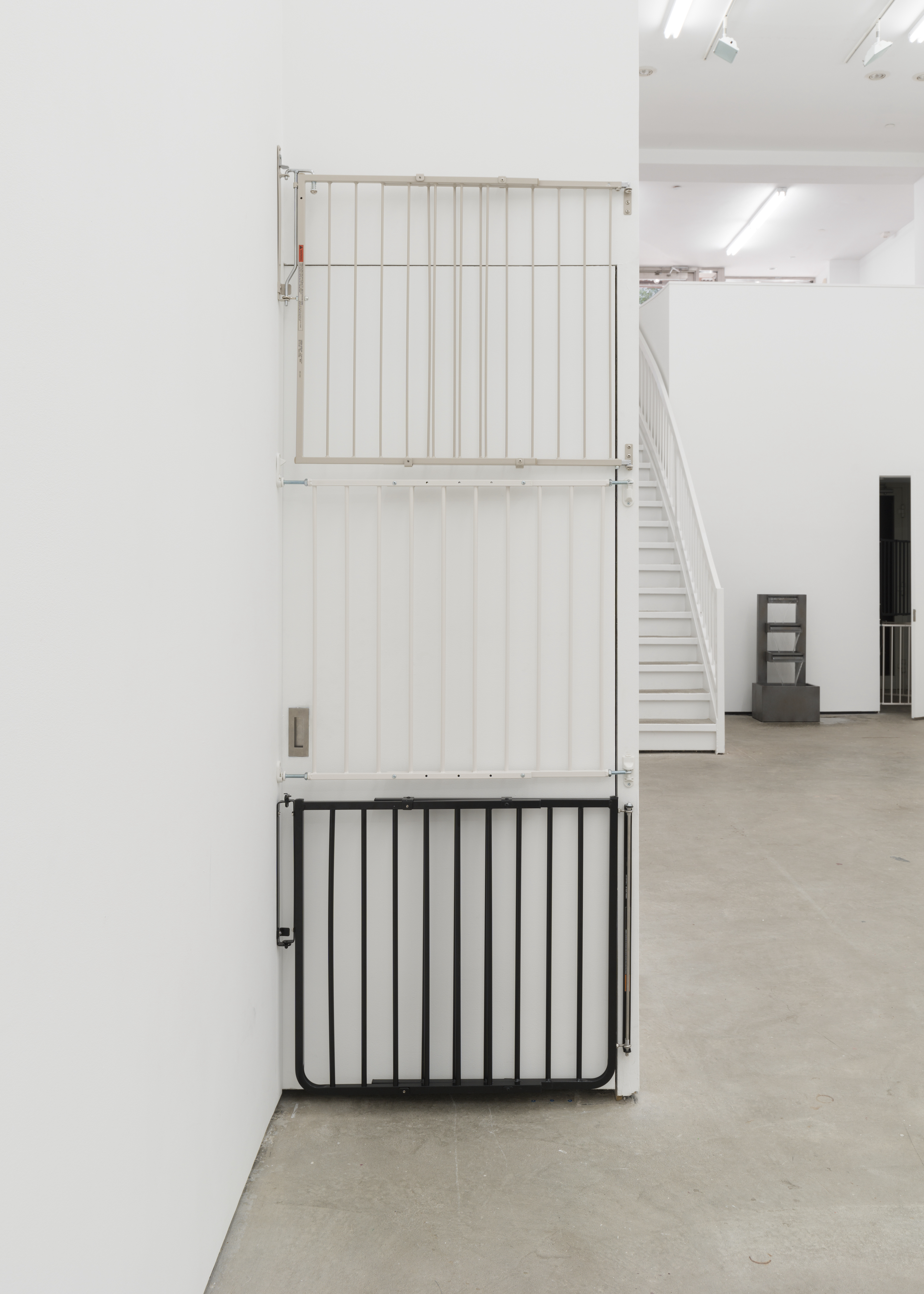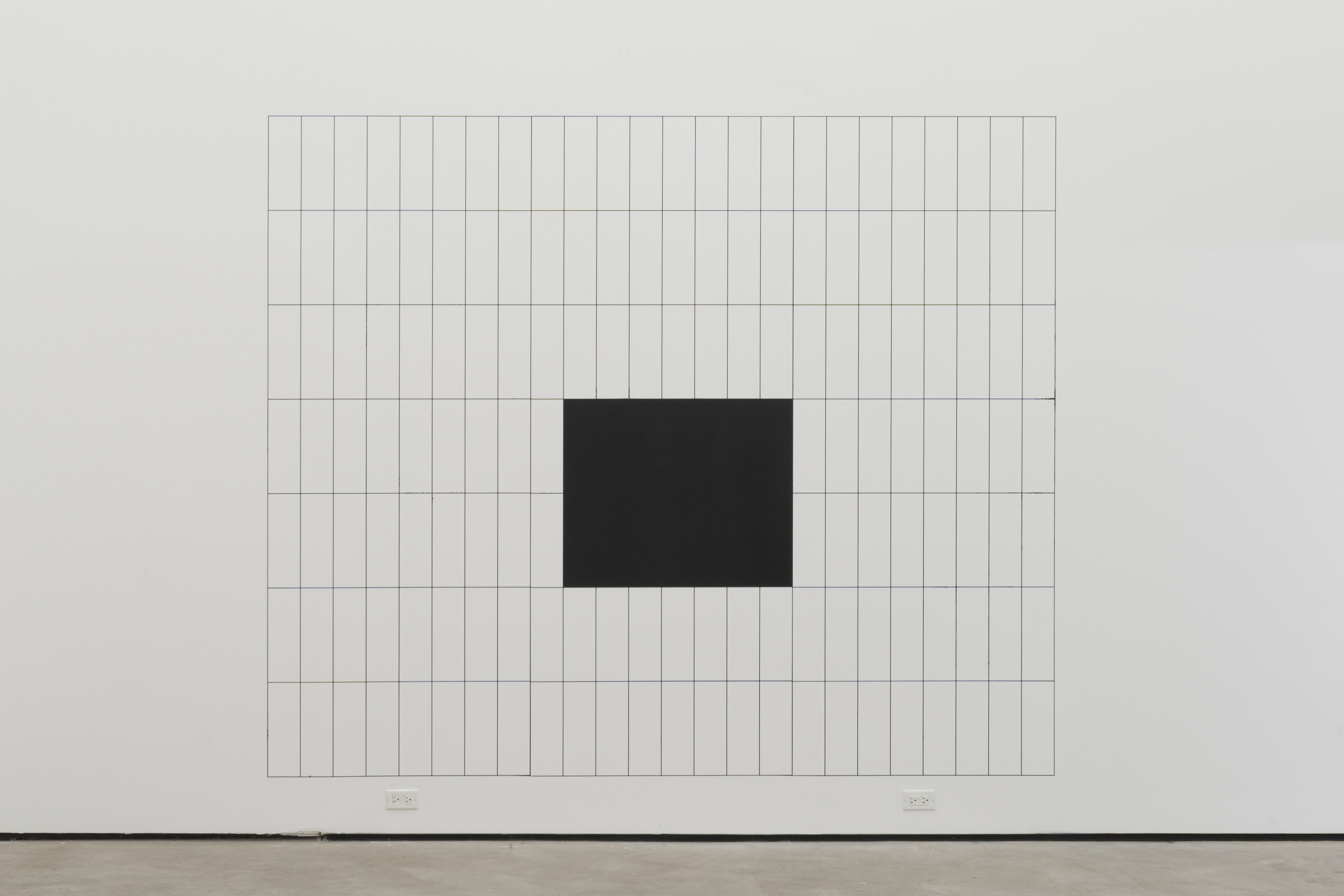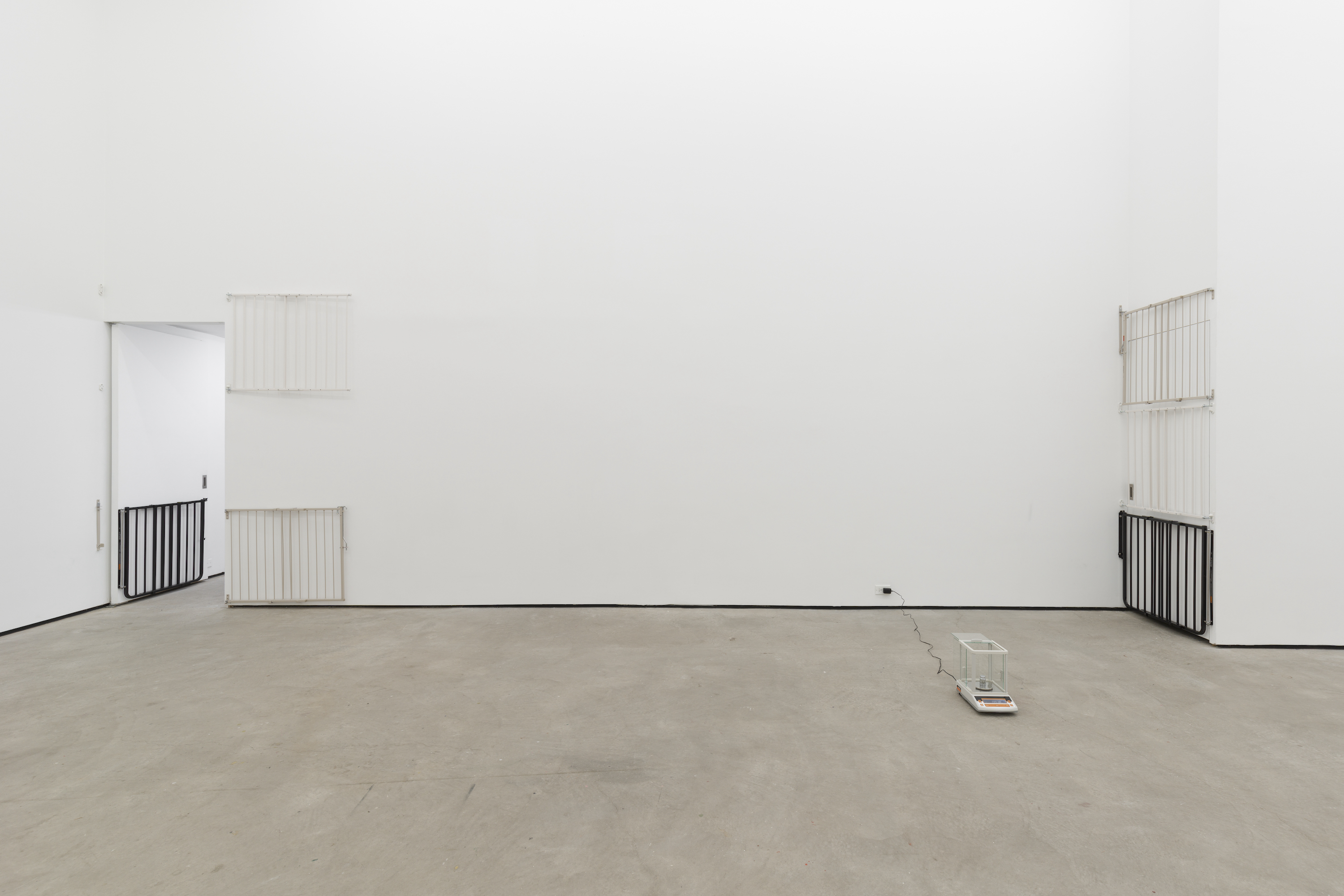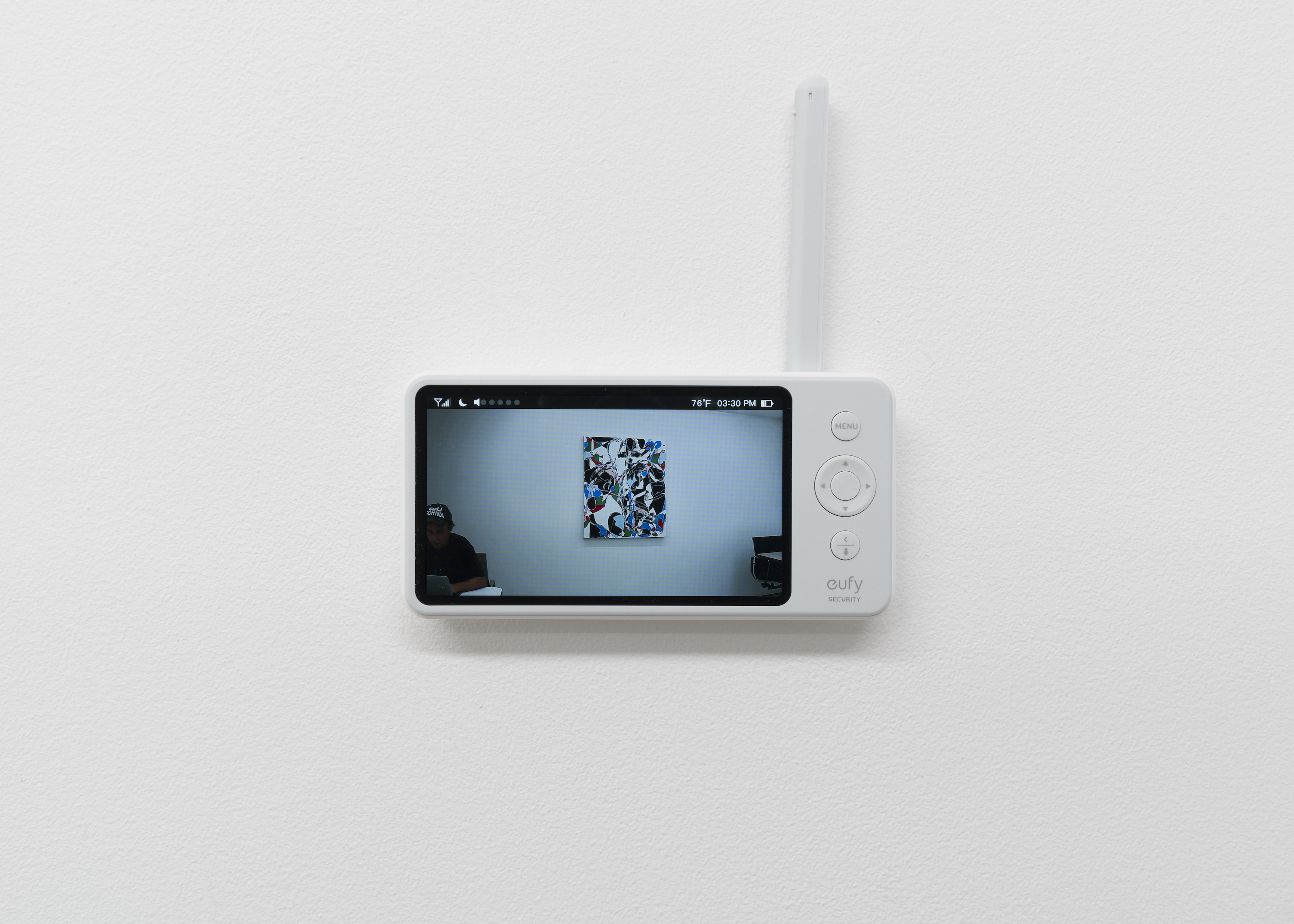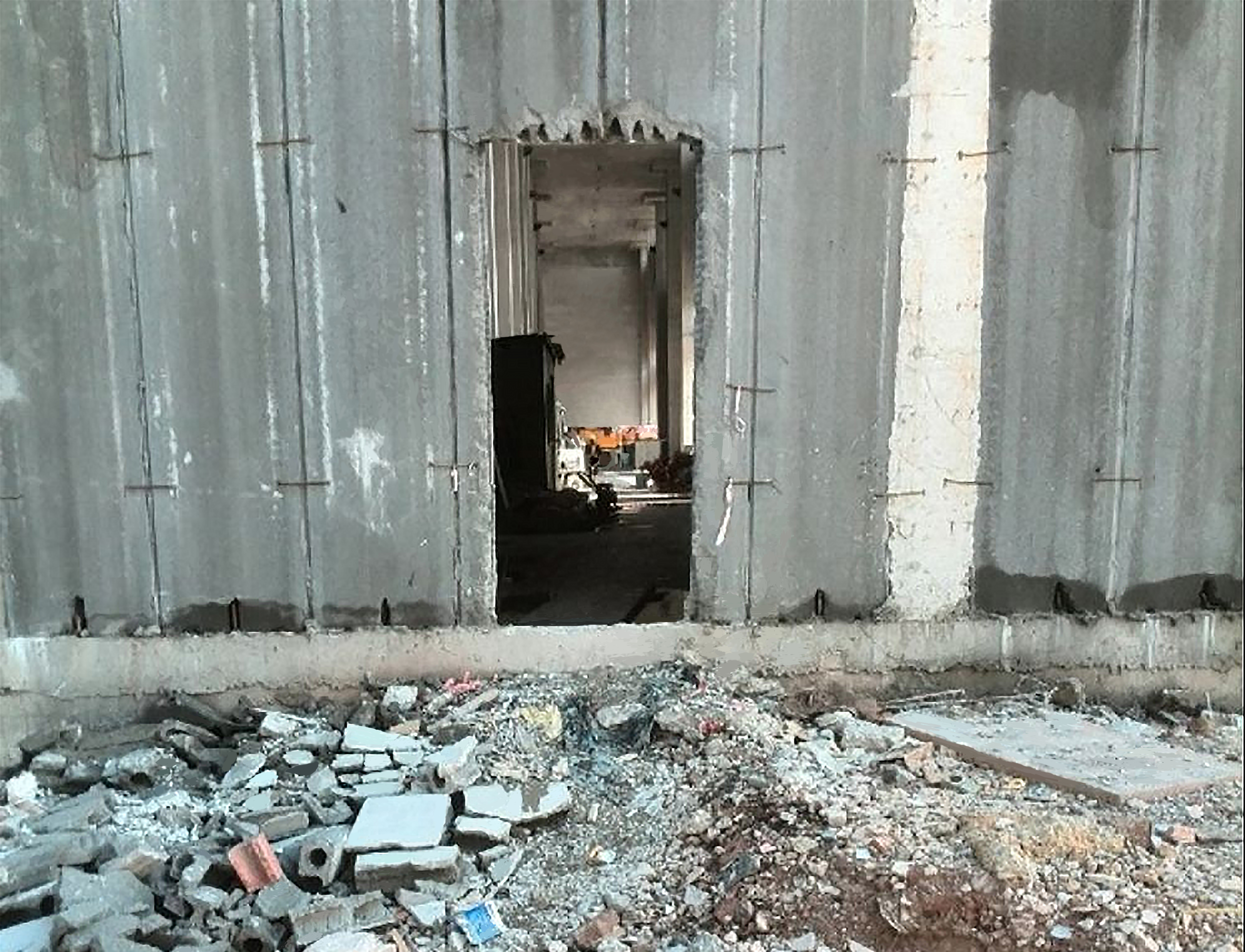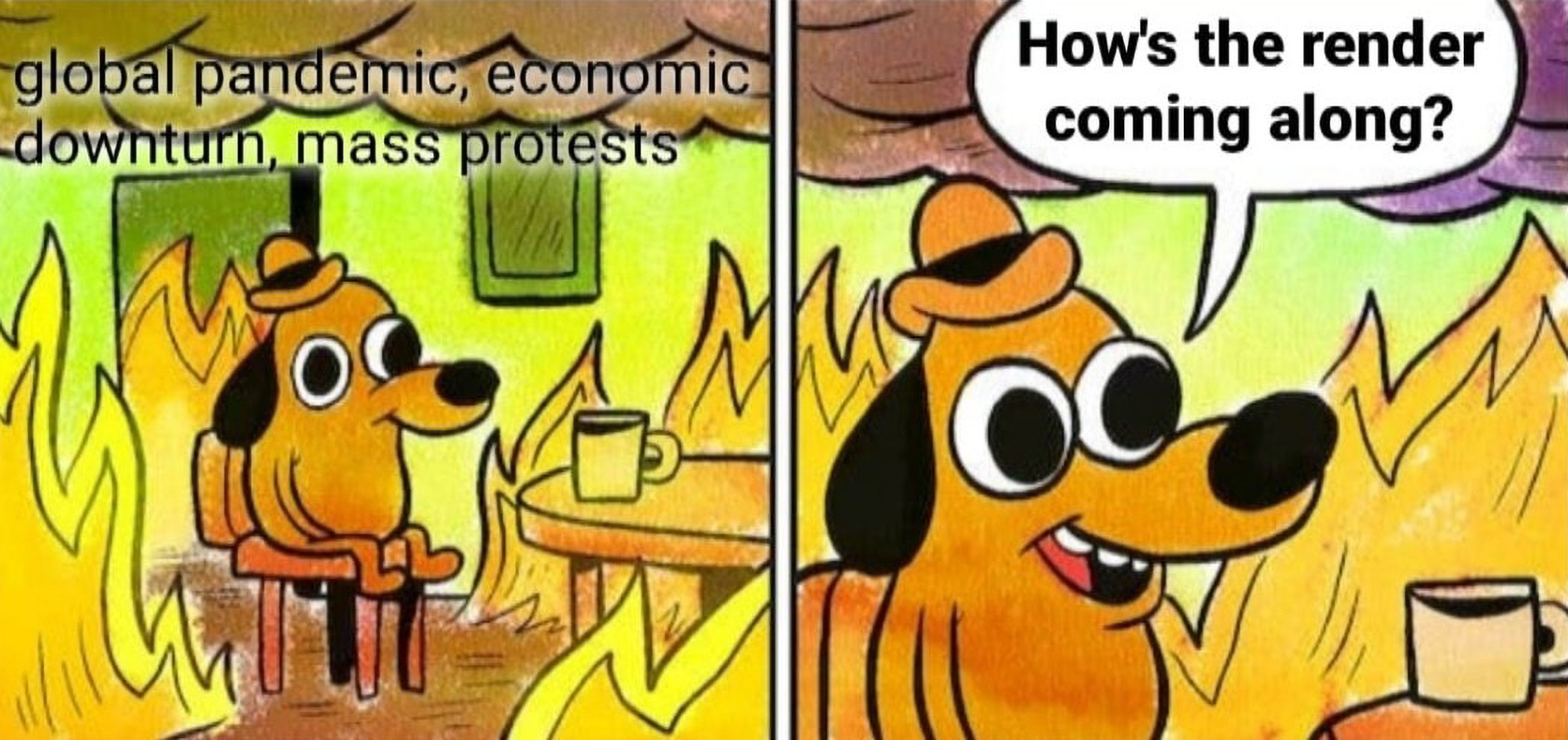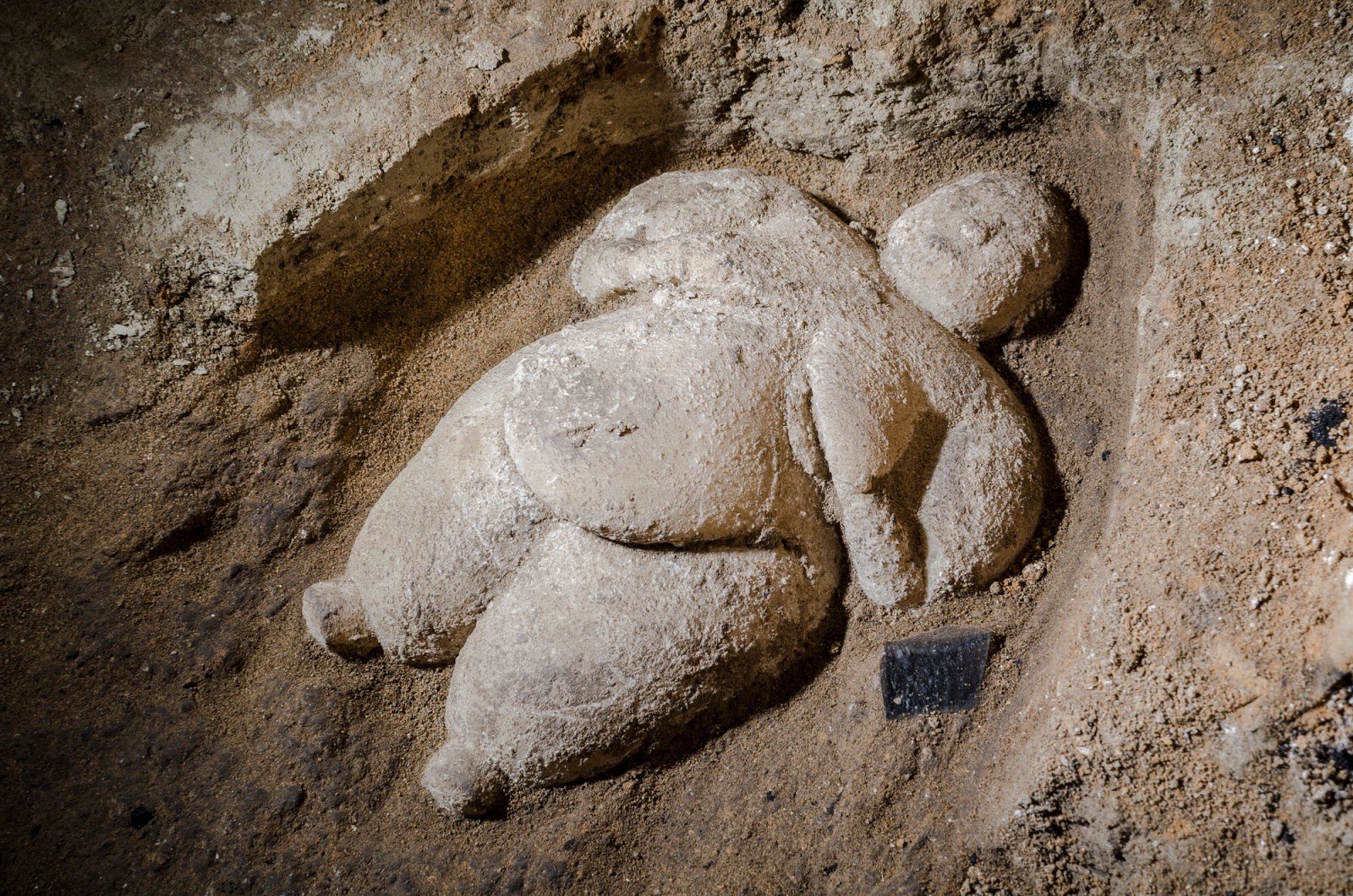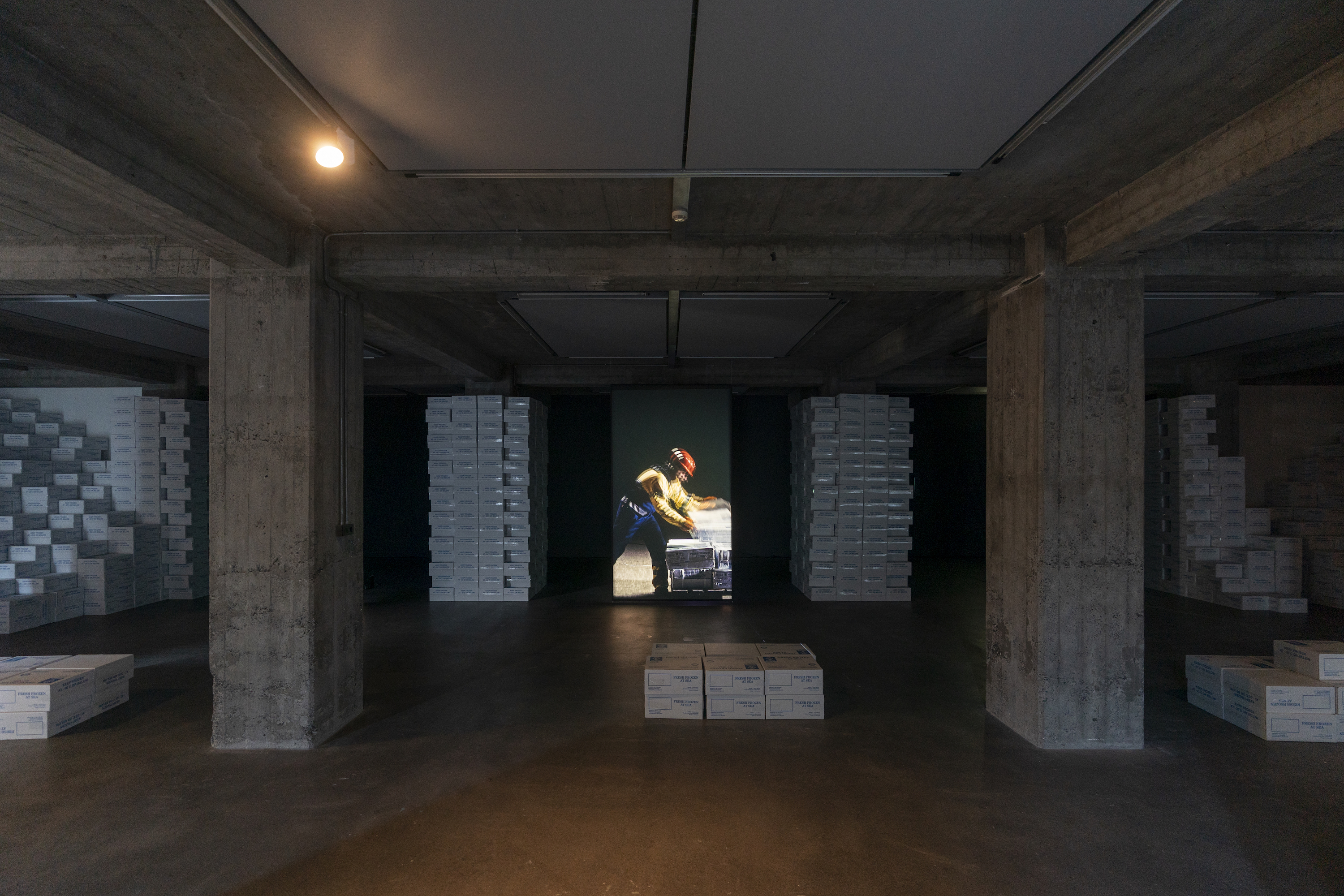September 8–October 15, 2022
What one sees of Ghislaine Leung’s “Balances” depends on precisely when one visits the exhibition. During Leung’s own “studio hours” (9 a.m. to 4 p.m., Thursday and Friday), Gates (2019) lines the main gallery space with child safety gates. The work’s three editions—each a different neutral shade—have been installed on top of each other: sometimes they occupy the same elevation of the wall in dense proximity, and at other points are stacked vertically. Directly before the first group of Gates is one half of Monitors (2022)—a baby monitor transmitting live footage of the gallery’s back office. Other works on view in the central space include Fountains (2022), a small readymade, three-tiered fountain burbling loud enough to “cancel sound” in the vicinity, as the work’s score instructs. A partly filled rectangular grid the size of Leung’s studio wall, Hours (2022), covers the largest wall.
Outside these hours, the gallery is apparently blank, all works removed or covered over. “Balances” exercises an unusually strict control over the terms of encounter with its work, calibrating the viewing situation to the artist’s allocated studio time for art production. In a correspondence with the gallery reproduced in the show’s press release, Leung explains the three-way conflict between her commitments to her child and her identity as an artist, and the work engagements that help support both, while also necessarily taking time away from them. “Balances” traces the material effects of this “mixed” position on Leung’s practice.
The show is not simply a one-way transposition of the studio space into the gallery, nor a clear demarcation of either a child’s ambit or an exhibition space. While works like Monitors hark to an outsourcing of care work, the triple-installed editions of Gates also indicate that we are in a terrain where multiple timeframes are (not quite) overlapping: studio time, childcare, exhibition time. Without a space free from the strictures of productivity, even the parental vigilance invoked by Monitors comes to resemble a colder form of scrutiny. And just as Fountains only “cancels” sound by raising the overall ambient noise, the exhibition suggests that what is often billed as a “balance” of the personal and the professional still becomes, under pressures of production, a superposition of conflicting activities.
The specific temporal restraints for viewing “Balances”—constituted by Times (2022), a “score” or set of instructions dictating the hours during which the exhibited work is accessible to the audience—are not only a condition of the installation, but a material layer within the exhibition. Works rendered inaccessible by Times still leave residues within the gallery. Metal infrastructures for each edition of Gates remain even once the doors are removed; white sheets and tape shroud Hours and Monitors respectively. These coverings act as a physical manifestation of Times, which covers over, conflicts with, and blankets all other work. It double-books Leung’s artwork, appointing it to another schedule than that of presentation. The show must be tightly managed: preparing for these objects to become unviewable also requires preparing for them to return at exactly the designated time. The perfect absence of a full deinstallation, while potentially made possible by the work’s score, would not be the point. Times emphasizes visual retraction—the artist might say “subtraction”—rather than disappearance.
On the baby monitor camera of Monitors, which has been trained on a desk in the gallery’s back room, gallery staff are seen and heard throughout their workday. Monitors’ score does not specify in which direction its circuitry of oversight should run; the gallery has installed the work’s screen at the gallery entrance, avoiding potential configurations that could lean more towards visitor surveillance. The effect is to merge motifs of care, exhibition transparency, and the soft surveillance of managerial control. That Monitors focuses on gallery employees rather than reversing or diffusing its transmitted footage is partly due, in Leung’s terms, to contingency—here, the gallery’s architecture and specific interpretation of Monitors’ score—but it also exposes the intrinsic directionality of Monitors’ transmission. There is an unavoidable asymmetry at play here, foisting pre-defined roles upon those present with the work: see or be seen.
The exhibition’s central piece, Hours, marks the abstracted space of art-world time by schematically blacking out Leung’s studio hours in proportional regions of a 24 by 7 unit rectilinear grid. Hours renders studio time spatial, demarcating it in nondescript, modernist fashion as a neutral array of time-locations. Times, by contrast, marks the present as a scarcity—a soon-voided space where recovery of lost units is impossible. In the end, Leung lets (capitalist) times take the upper hand over landscaped hours in “Balances.” Through this minimal gesture, Leung demonstrates a real crisis in our attempts to triangulate incommensurable units of measure, value, and time. In routing surplus labor-hours away from the impossible flow of endless presents we associate with permanent art objects, “Balances” allows material life to exist apart from the labor required to reproduce it.

